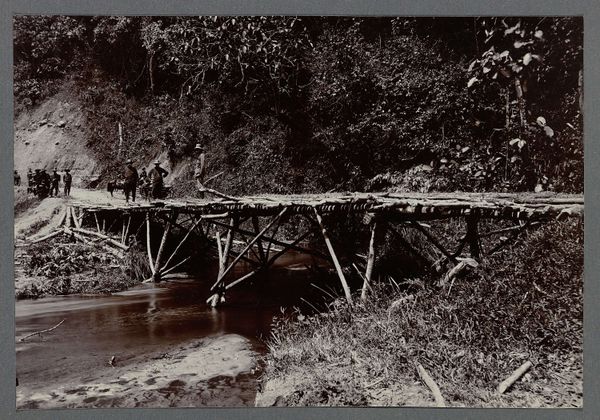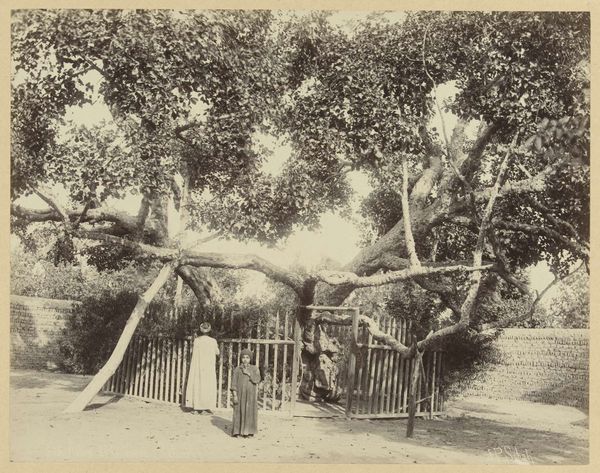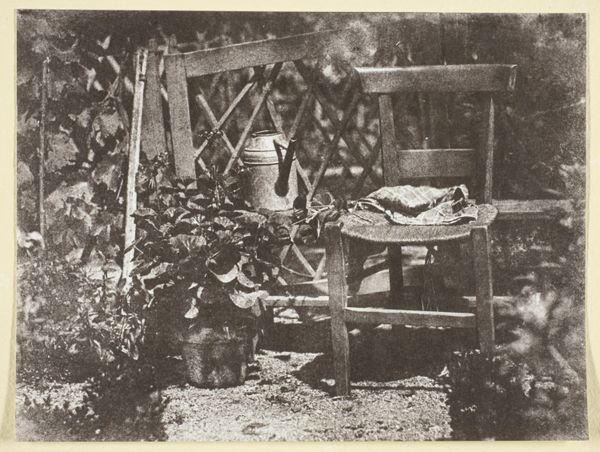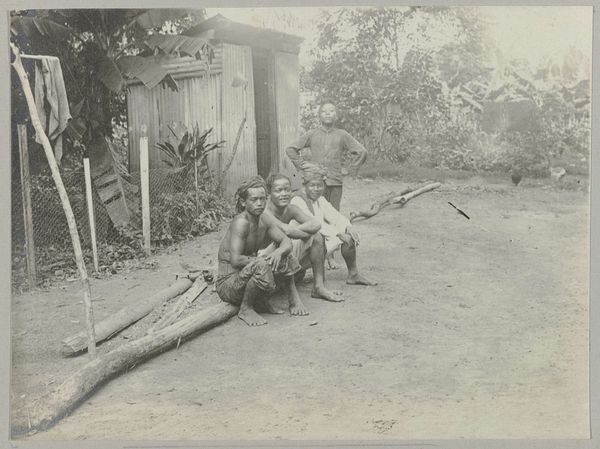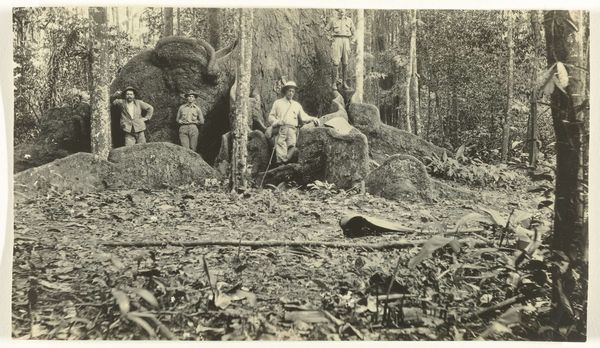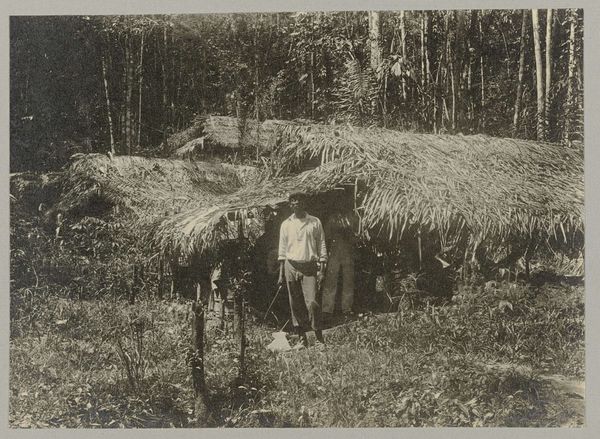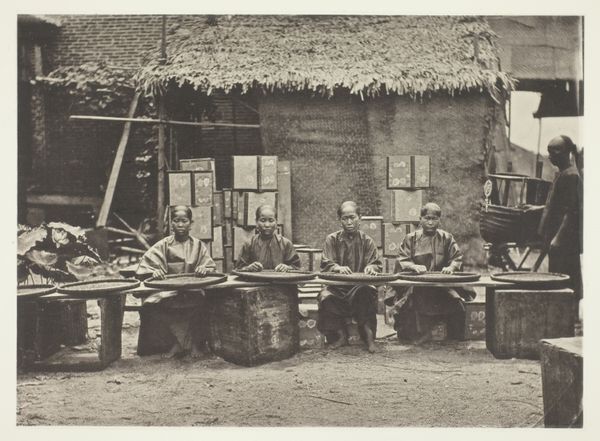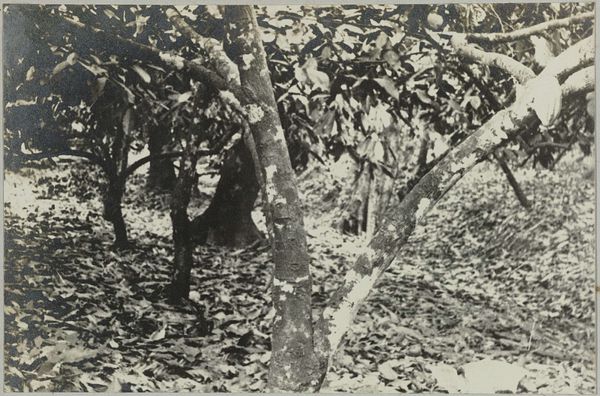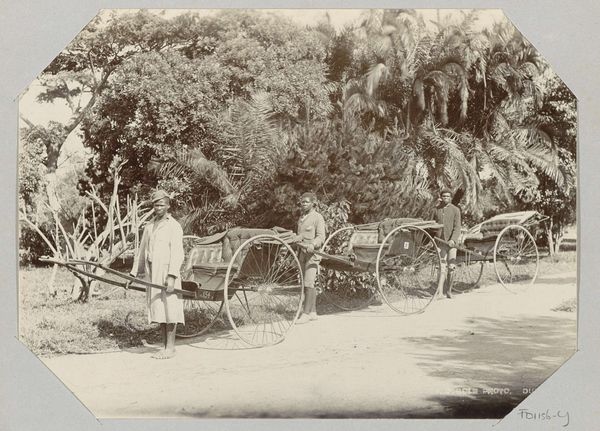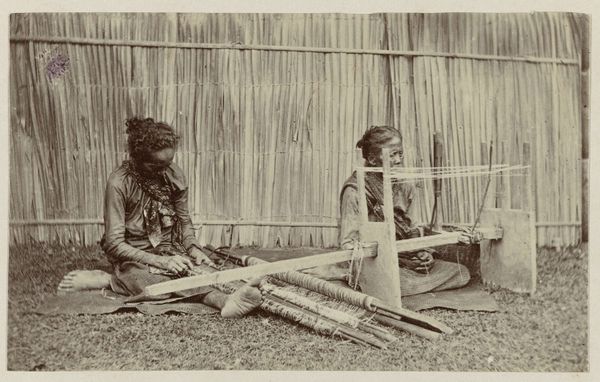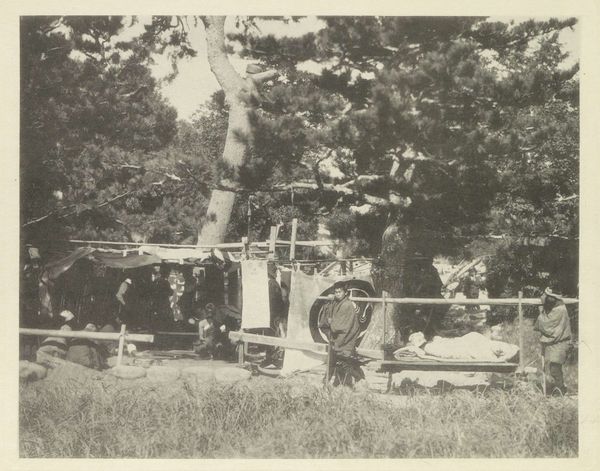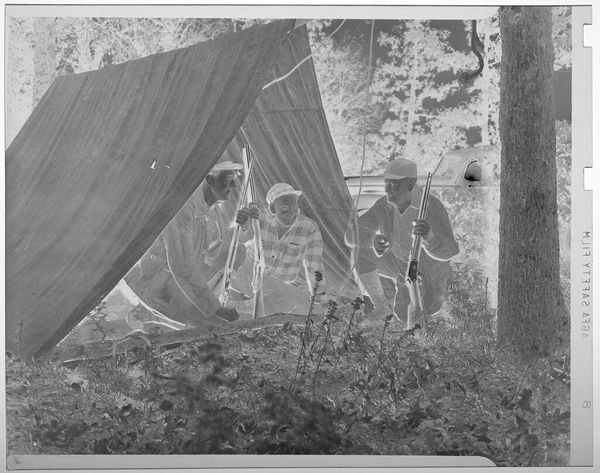
Twee kainweefsters aan een weefgetouw op Sumatra 1890 - 1912
0:00
0:00
christiaanbenjaminnieuwenhuis
Rijksmuseum
textile, photography
#
asian-art
#
textile
#
photography
#
19th century
#
realism
Dimensions: height 167 mm, width 214 mm
Copyright: Rijks Museum: Open Domain
Curator: At first glance, this photograph exudes such tranquility. The textures, tones... It almost feels like stepping into a still moment of history. Editor: Exactly. We're looking at "Twee kainweefsters aan een weefgetouw op Sumatra", which translates to "Two cloth weavers at a loom in Sumatra." This photograph by Christiaan Benjamin Nieuwenhuis was captured sometime between 1890 and 1912 and is held here at the Rijksmuseum. The sepia tones really give it that timeless quality, don't they? Curator: Absolutely. The two women are central figures, completely absorbed in their weaving. Their clothing, their posture… It’s loaded with unspoken meaning, connecting them to generations of artisans. I imagine this activity goes way back in their cultural memory. Editor: No doubt. We need to consider this photo within its historical context. During this period, the Dutch colonial presence in Sumatra was heavily influencing local economies and industries. Photography became a tool of documentation and, frankly, control. I wonder about the photographer's intention here. Is it simply a record, or is it something more exploitative? Curator: That tension is palpable, isn’t it? There’s an inherent complexity – a visual record that inevitably reflects the power dynamics of the time. However, I’m also struck by how the details offer glimpses into their traditions, for example, I notice the jewelry that the woman on the right wears and think it could be a symbol of status. I see them working so collaboratively. This textile, created from those threads, isn’t simply material; it embodies identity, culture. Editor: And it's important to remember how photographs like these circulated. They weren't always intended for a local audience. Images from colonized lands helped shape perceptions, often exoticizing or romanticizing cultures for a European audience, it makes me think what sort of impression this picture had. It can make people who didn't know a whole different culture develop all sorts of presumptions, can't it? Curator: It is vital to confront that legacy. By carefully considering the layers of meaning encoded within this image, we respect the labor, skill, and cultural continuity of these women and so many other artisans impacted by those events. Editor: Indeed. Looking at "Two Cloth Weavers at a Loom in Sumatra" today pushes us to see beyond the surface and really question the history that shaped what we’re viewing.
Comments
No comments
Be the first to comment and join the conversation on the ultimate creative platform.

